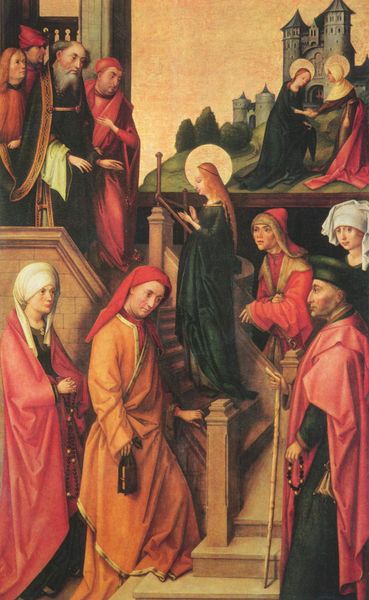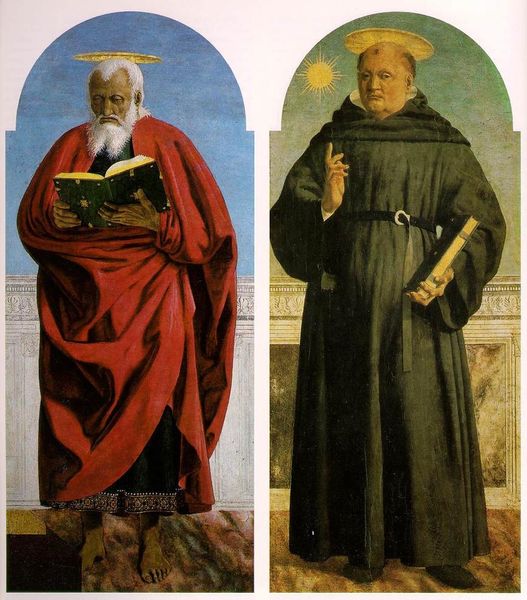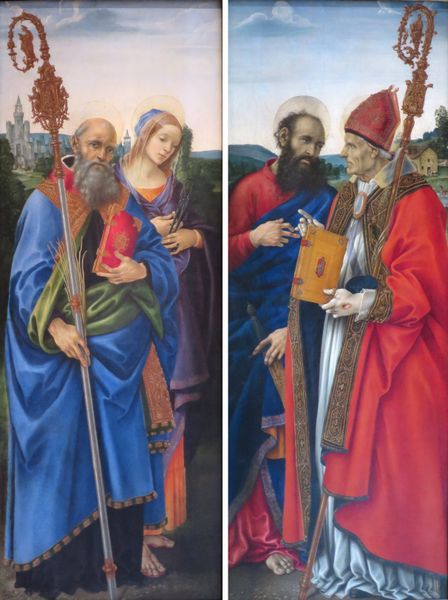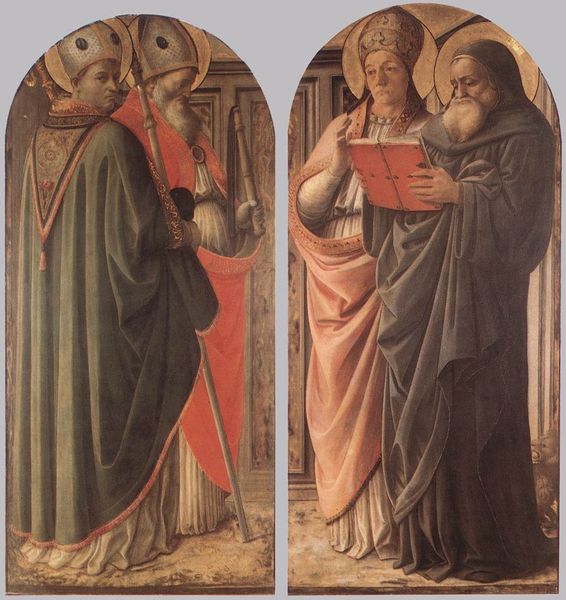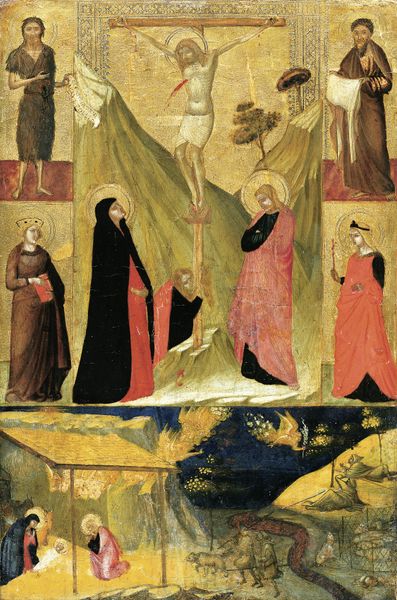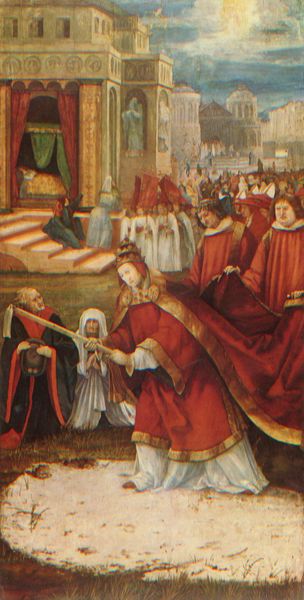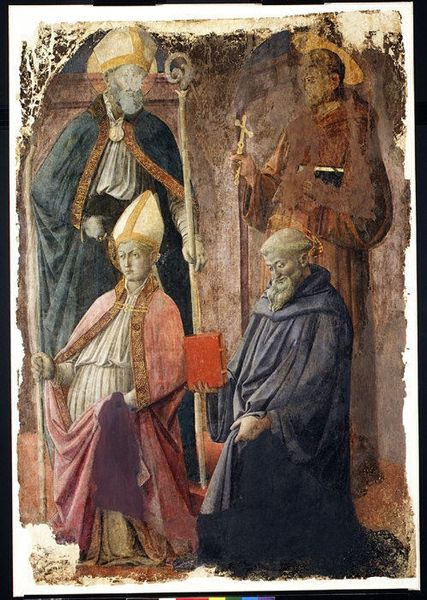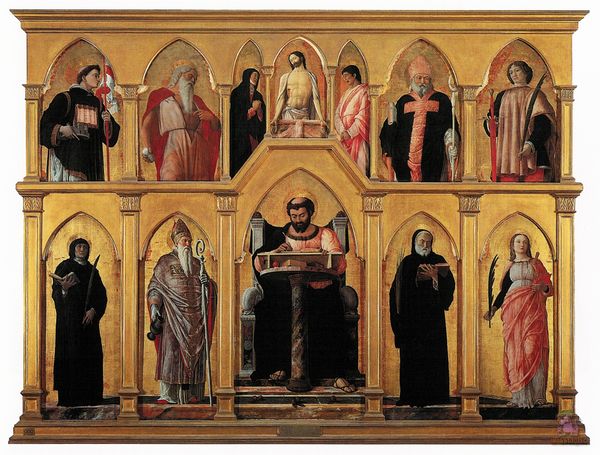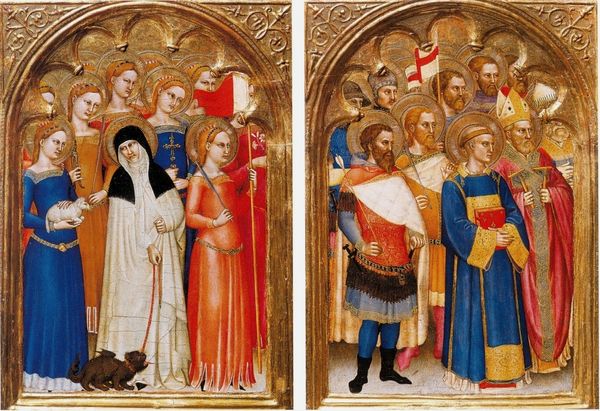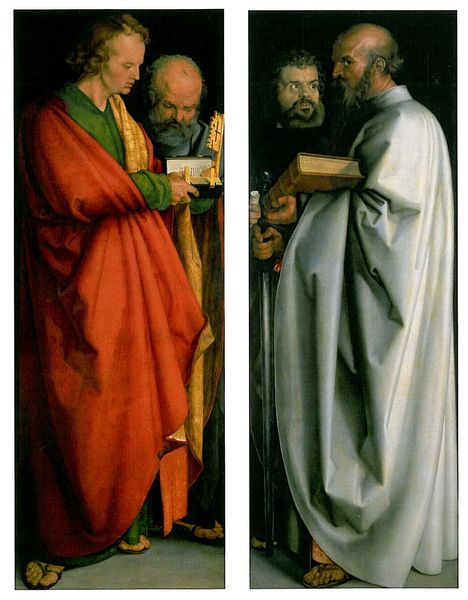
Jabach Altarpiece Piper and Drummer 1504
0:00
0:00
albrechtdurer
Wallraf-Richartz Museum, Cologne, Germany
painting, oil-paint
#
portrait
#
painting
#
prophet
#
oil-paint
#
oil painting
#
christianity
#
history-painting
#
northern-renaissance
#
academic-art
#
early-renaissance
#
portrait art
Copyright: Public domain
Curator: Looking at the Jabach Altarpiece Piper and Drummer by Albrecht Durer painted around 1504, currently housed in the Wallraf-Richartz Museum. I’m immediately drawn into its calm intensity; the colors, those robes…they glow, almost meditative. Editor: The somber hues definitely set a contemplative tone. The historical context is unavoidable when you see the figures posed with that much stateliness and formal attire – power dynamics immediately come to mind. It’s easy to consider, whose stories and identities are privileged and legitimized? Curator: I wonder though, did Durer ever stop to think that future humans might get lost in our analyses and the deep socio-political undertones? Perhaps it was just an honest depiction of what he observed around him? I'm sure he thought it was pretty snazzy attire. Editor: Considering the Reformation was brewing right around this time in the early 16th century, these opulent displays would have carried real weight. Reformers certainly critiqued that wealth gap and how the church flaunted it so boldly! The subjects, like Bishop Wolfgang, symbolize powerful institutions with distinct agendas. Curator: Agreed. It really seems like he just immortalized the upper crust – like capturing a particularly juicy slice of courtly gossip on canvas for posterity. Almost seems gossamer-thin now, yet he has captured their images forever. The Bishop appears deep in thought. Was it always that difficult? Editor: The painting encapsulates the visual rhetoric that reinforced these societal structures. Even down to the robes, the cut, color and their placement, all reinforcing societal messages. The composition becomes another instrument in how those with the most power were viewed in society. What message are we consuming by simply regarding the two groups as an ensemble of important persons? Curator: Still, they evoke such emotion. Look at that saint! Something deep and human in there too. Maybe it is more complex to see things black and white. I mean the figures stare so thoughtfully. But thinking about their attire, is it a form of resistance? How might ordinary observers see them in ordinary society. How do these ideas shape society? Editor: And in grappling with its contradictions we start to discern even more about this historical period. That constant dialogue between aesthetic experience and deeper ethical inquiries -- that's how art helps society. Curator: You’re right. Art is forever provoking us!
Comments
No comments
Be the first to comment and join the conversation on the ultimate creative platform.
